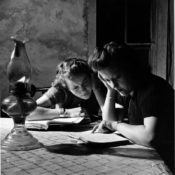 Jamie York Books, Resources, Workshops
Jamie York Books, Resources, Workshops Summer Programs - Culminating Class Trips
Summer Programs - Culminating Class Trips Flexible preparation for your new grade
Flexible preparation for your new grade Waldorf Training in Australia
Waldorf Training in Australia Full-Time Teacher Education
Full-Time Teacher Education Train to Teach in Seattle
Train to Teach in Seattle Quality Education in the Heartland
Quality Education in the Heartland Immersive Academics and Arts
Immersive Academics and Arts Caring for All Stages of Life
Caring for All Stages of Life Great books for Waldorf Teachers & Families
Great books for Waldorf Teachers & Families The Journey is Everything
The Journey is Everything Everything a Teacher Needs
Everything a Teacher Needs Transforming Voices Worldwide
Transforming Voices Worldwide Waldorf-inspired Homeschool Curriculum
Waldorf-inspired Homeschool Curriculum Bay Area Teacher Training
Bay Area Teacher Training Bringing Love to Learning for a Lifetime
Bringing Love to Learning for a Lifetime ~ Ensoul Your World With Color ~
~ Ensoul Your World With Color ~ Association for a Healing Education
Association for a Healing Education Middle School Science With Roberto Trostli
Middle School Science With Roberto Trostli Apply Today: New Cohort Starts Nov. 2025
Apply Today: New Cohort Starts Nov. 2025 Resiliency and the Art of Education
Resiliency and the Art of Education Space speaks. Its language is movement.
Space speaks. Its language is movement.
 Roadmap to Literacy Books & Courses
Roadmap to Literacy Books & Courses
Would you like to become a sponsor?
Waldorf News

Fortnite may be a virtual game, but it’s having real-life, dangerous effects
April 29, 2019
“They are not sleeping. They are not going to school. They are dropping out of social activities. A lot of kids have stopped playing sports so they can do this.” Michael Rich, a pediatrician and director of the Clinic for Interactive Media and Internet Disorders at Boston Children’s Hospital, was talking about the impact “Fortnite: Battle Royale” — a cartoonish multiplayer shooter game — is having on kids, mainly boys, some still in grade school. “We have one kid who destroyed the family car because he thought his parents had locked his device inside,” Rich said. “He took a hammer to the windshield.” A year and a half since the game’s release, Rich’s account is just one of many that describe an obsession so intense that kids are seeing doctors and therapists to break the game’s grip, in some cases losing so much weight — because they refuse to stop playing to eat — that doctors initially think they’re wasting away from a physical disease. The stress on families has become so severe that parents are going to couples’ counselors, fighting over who’s to blame for allowing “Fortnite” into the house in the first place and how to rein in a situation that’s grown out of control. More »
In China, classroom cameras scan student faces for emotion, stoking fears of new form of state monitoring
April 15, 2019
A Chinese school has equipped several classrooms with cameras that can recognize the emotions of students, introducing a potent new form of artificial intelligence into education, while also raising alarms about a novel method of monitoring children for classroom compliance. The cameras, installed at Hangzhou No. 11 High School, are designed to automatically take attendance and track what students are doing at any moment, including reading, writing or listening. But they also promise to provide real-time data on students’ outward expressions, tracking whether they look scared, happy, disgusted, sad, surprised, angry or neutral. The system has been touted as a way to ensure students are attentive and happy, learning quickly and, ultimately, scoring well on tests. Using the system, installed in March, the school can place students into six behaviour categories: Some might be immersed in learning, while some might be distractions. “We have a minimum score. If a student’s classroom score is lower than that, it means this student is failing to focus during class time,” said vice principal Zhang Guanchao in an interview with The Paper, a Chinese state-run online news outlet. The system will then notify the teacher. The first month, Mr. Zhang said, has prompted students to “voluntarily change their behaviours and classroom habits,” allowing students to “attend classes more happily now.” More »

The Cult of Homework: America’s devotion to the practice stems in part from the fact that it’s what today’s parents and teachers grew up with themselves.
April 5, 2019
America has long had a fickle relationship with homework. A century or so ago, progressive reformers argued that it made kids unduly stressed, which later led in some cases to district-level bans on it for all grades under seventh. This anti-homework sentiment faded, though, amid mid-century fears that the U.S. was falling behind the Soviet Union (which led to more homework), only to resurface in the 1960s and ’70s, when a more open culture came to see homework as stifling play and creativity (which led to less). But this didn’t last either: In the ’80s, government researchers blamed America’s schools for its economic troubles and recommended ramping homework up once more. More »

When Kids Realize Their Whole Life Is Already Online: Googling yourself has become a "rite of passage"
March 25, 2019
For several months, Cara has been working up the courage to approach her mom about what she saw on Instagram. Not long ago, the 11-year-old—who, like all the other kids in this story, is referred to by a pseudonym—discovered that her mom had been posting photos of her, without prior approval, for much of her life. “I’ve wanted to bring it up. It’s weird seeing myself up there, and sometimes there’s pics I don’t like of myself,” she said. Like most other modern kids, Cara grew up immersed in social media. Facebook, Twitter, and YouTube were all founded before she was born; Instagram has been around since she was a toddler. While many kids may not yet have accounts themselves, their parents, schools, sports teams, and organizations have been curating an online presence for them since birth. The shock of realizing that details about your life—or, in some cases, an entire narrative of it—have been shared online without your consent or knowledge has become a pivotal experience in the lives of many young teens and tweens. More »

The Stigma of Choosing Trade School Over College When college is held up as the one true path to success, parents—especially highly educated ones—might worry when their children opt for vocational school instead.
March 18, 2019
“Keep your grades up, get into a good college, get a good degree,” as Reesman recalls it. Of the four Reesman children, one brother has followed this path so far, going to school for dentistry. Reesman attempted to meet this expectation, as well. He enrolled in college after graduating from high school. With his good grades, he got into West Virginia University—but he began his freshman year with dread. He had spent his summers in high school working for his pastor at a custom-cabinetry company. He looked forward each year to honing his woodworking skills, and took joy in creating beautiful things. School did not excite him in the same way. After his first year of college, he decided not to return. More »
 Recent Jobs
Recent Jobs
View more jobs »
 Newsletter Archive
Newsletter Archive
 Join the Mailing List!
Join the Mailing List!
Stay Connected…
Each week receive the Waldorf News Weekly Update, full of news, events, and more. Keep abreast of what's happening with Waldorf education.
 RSS Feeds
RSS Feeds